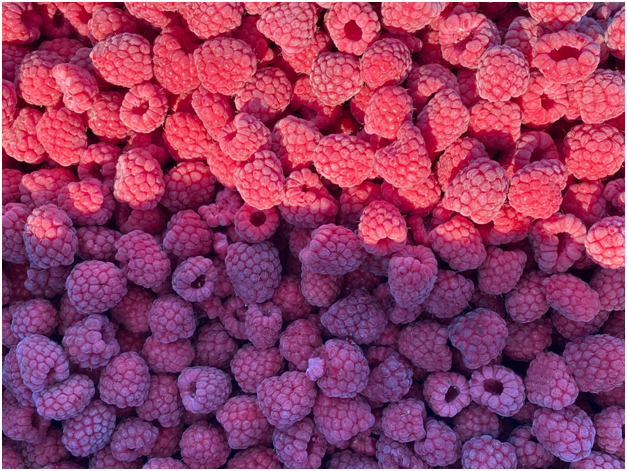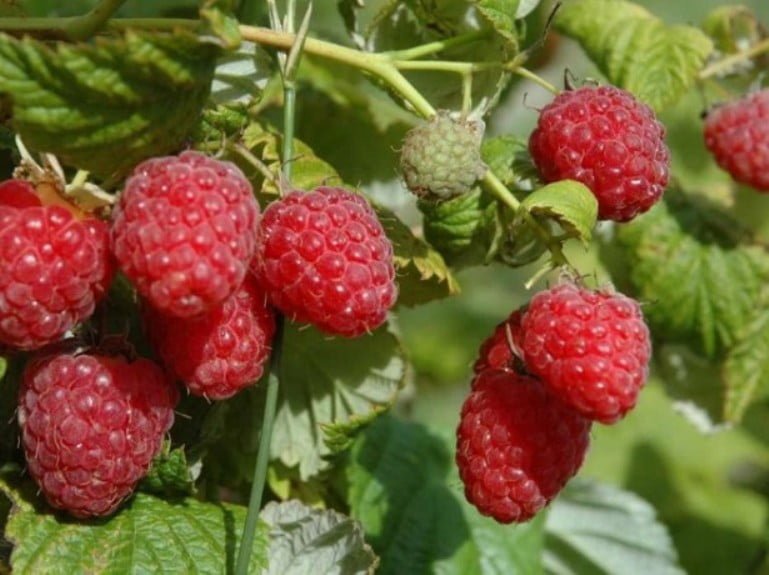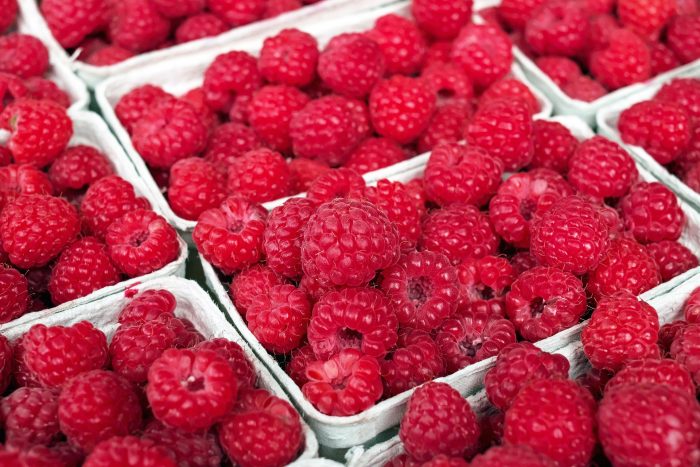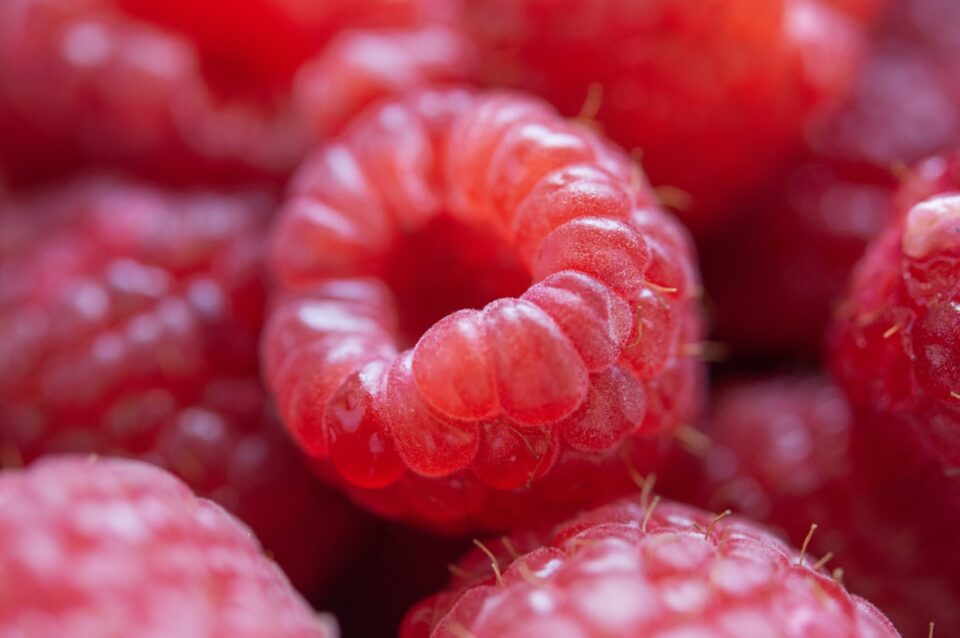The new raspberry season in Eastern Europe has just started but is already making headlines. Farmers are shocked by low prices, call for boycotts of freezing factories, import bans and for the government help, and share angry comments in social media.
The raspberry price cycle, which EastFruit wrote about in the spring of this year, has reached its bottom almost everywhere, as many market players think. However, we think that it quite possible, and even likely, that this bottom has not yet been reached. It is impossible to predict the future exactly, which is why the EastFruit international team has collected facts on the key raspberry countries of the region: Serbia, Poland, Ukraine, and Moldova, so that everyone can draw their own conclusions.
Serbia
Serbia is a long-term leader of global frozen raspberry exporters. In the recent years, competition from Ukraine and Morocco has somewhat weakened the position of Serbia, but it is here that prices are formed, primarily for premium quality frozen raspberries.
Presently in Serbia the highest level of procurement prices for raspberries is observed although it has started the season earlier than other countries reviewed. Raspberries for freezing in Serbia are now purchased at prices starting at $1.40/kg, which is 3.5 times cheaper on average than the prices paid to farmers in 2022. Even though Serbia does have the highest price on the market, it still raises a great level of dissatisfaction among farmers.
The situation in the Serbian raspberry industry is difficult indeed. Stocks of last year’s frozen raspberries remain significant. In 2022 the raspberry harvest in Serbia was higher than in 2021 but the exports through April 2023 were 25 thousand tons less. It is very easy to calculate what how much more frozen raspberry is still unsold compared to the previous season! On the one hand, market participants believe that it is the Serbian freezers that hold the most high-quality stocks of raspberries from 2022, but, on the other hand, they also paid much more raw materials than Ukrainian freezers.

Recall that it was the high price of raspberries on the world market in 2020-2022 that caused a sharp drop in demand for it. Given the economic difficulties in the world, low price with high quality is the main sales argument. Although Serbia is doing well with raspberry quality, it certainly finds it difficult to compete on price.
As a positive factor for the market, we can note the assumption that the harvest in Serbia may decrease due to floods in early summer. Moreover, many local experts say that production has fallen by a quarter or even a third from last year’s level. However, keep in mind that raspberry acreage has been expanded in response to high prices, so lower yields will not necessarily lead to a sharp drop in production. Moreover, it is likely that production will still be below last year’s, but with a high probability higher than in 2021, when raspberries in Serbia were hit by frost.
However, so far, the news from Serbia has not yet led to any additional activity in the global frozen raspberry market. Buyers did not react at all to the news about the consequences of the flood. The prices for “class A” raspberries have not changed either. Therefore, we would be cautious both in assessing the “significant decline in production in Serbia”, as well as in assessing the decline in this production as a whole.
But low prices in Serbia and the massive discontent of farmers forced local officials to intervene in the situation. To the credit of the Serbian government, it did not intervene in the market itself, but introduced an emergency lending program for small and medium-sized producers, as well as processors. At the same time, raspberries that have not been sold since last year, as well as raspberries that will be produced by freezers this year, were valued at 300 dinars per kg, which is equivalent to $2.79 US dollars per kg or 2.56 euros per kg.
According to EastFruit, this assessment is quite adequate for high-quality Class A raspberries at the moment, because an upper threshold for prices at which real transactions take place is indeed close to these figures. However, it is by no means clear that prices have already bottomed out, as there is no reason yet to suggest that stocks of frozen raspberries in Europe by October 1, 2023 will necessarily be lower than a year earlier. But the fact that demand has fallen seriously is confirmed by all market players.
Poland
In Poland, the raspberry season began in early June with the greenhouse berries. It must be said that in Poland there are more and more projects that focus on the fresh market rather than on frozen berries, growing raspberries in greenhouses. However, this is a completely different business, with different varieties, a different level of investments into production, handling, packaging, and logistics. Therefore, the fresh market prices for raspberries in Poland are more separated from the prices for frozen raspberries than in Ukraine and Moldova. For example, in the fresh market, prices for raspberries range from 12 to 18 zlotys per kg ($2.94-4.41/kg) right now, which is also the lowest price level in the last five years but it is still much higher than prices for raspberries procured for freezing.
The first deliveries of raspberries to processing enterprises began this week at a purchase price of 5 zł per kg ($1.23/kg). The same price was offered for raspberries for freezing and raspberries for other types of processing. For comparison, in Poland last year, the minimum price for raspberries for freezing in autumn was 6.5 zlotys/kg ($1.60/kg), and berries for other processing were purchased for 6 zlotys/kg ($1.47/kg). Prices for frozen raspberries in summer were much higher. As is often the case, producers turned out to be completely unprepared for such events, which they associate with anything but the usual market situation – from a conspiracy of processors and intrigues of competitors to a desire to destroy agriculture in a single country.
As is tradition, Polish farmers met the price collapse with promises to protest and calls on the government to ban raspberry imports from several other countries, specifically from Ukraine. In turn, the Polish government, as in Serbia, launched a financial support program for farmers, but so far has not responded to calls to ban imports. It should be noted that, given the recent events in the grain and other agricultural products markets, it is impossible to exclude the possibility of imposing restrictions on the import of raspberries from Ukraine.
However, such a ban is unlikely to significantly change the situation on the Polish market. Last year, Poland imported only 0.4 thousand tons of fresh raspberries from Ukraine, with total imports of 5.3 thousand tons and domestic production of 100 thousand tons. Thus, Ukraine’s raspberries accounted for a fraction of percent in the total fresh raspberry market supply in Poland.
 It was very different for the frozen raspberries segment, where imports from Ukraine were much more significant. Ukraine supplied 24 thousand tons out of 35 thousand tons imported in 2022. Nonetheless, imported frozen raspberries from Ukraine never entered the Polish market, but were used for re-exports to other countries. Ironically, in the 2022/23 season, Ukraine was the one who made make money on frozen raspberries, while Poland worked in the red.
It was very different for the frozen raspberries segment, where imports from Ukraine were much more significant. Ukraine supplied 24 thousand tons out of 35 thousand tons imported in 2022. Nonetheless, imported frozen raspberries from Ukraine never entered the Polish market, but were used for re-exports to other countries. Ironically, in the 2022/23 season, Ukraine was the one who made make money on frozen raspberries, while Poland worked in the red.
Please note that part of the imports of Ukrainian frozen raspberries to Poland in 2022/23 season was not an actual import but a storage service provided by Polish freezers to Ukrainian colleagues. This option was popular as Ukraine’s energy infrastructure was subjected to terrorist attacks by the Russians.
It is worth recalling that in order to remain in the leading positions on the global raspberry market, it is critically important for Poland to purchase Ukrainian products. After all, raspberries grown in Ukraine already accounts for up to 30% of Polish raspberry exports! At the same time, the volume of domestic production of raspberries in Poland tends to decrease due to the shortage of workers for picking.
Ukraine
Ukraine has traditionally offered the lowest prices for frozen raspberries in the world over the past 5-7 years. Thus, the prices for raw material in Ukraine cannot be the same as in other leading exporting countries and must be lower. There is another reason for lower purchase prices of raspberries in Ukraine than in Poland and Serbia – the size and efficiency of the freezing facilities. In Poland and Serbia, enterprises are much larger and more efficient, respectively, they can afford to pay more for raspberries.
The third factor that affects lower purchase prices for raspberries in Ukraine is the quality of raw materials. Despite the excellent agro-climatic conditions for growing premium quality raspberries in Ukraine, the average farmer in this country has significantly less experience in commercial cultivation of raspberries than growers in Poland and Serbia. Also in Ukraine production technologies are not unified, and many producers do not even know for sure which variety of raspberries they grow.
Accordingly, it is absolutely not surprising that in Ukraine many small producers in some regions cannot receive more than 18 UAH/kg ($0.49/kg) per kg of berries delivered for freezing. Freezers are willing to pay higher price for high quality raspberries from large suppliers.
Today the maximum price for raspberries in Ukraine is noted at the premium segment of the fresh market and reaches 70-80 UAH/kg ($1.90-2.20/kg). Of course, only very few companies with effective organization of regular deliveries of large consignments of raspberries to retail chains can get such a price, although one should not forget that there is such a thing as deferred payment by supermarket chains. The bulk of raspberry offers for the fresh market starts from 30 UAH/kg ($0.80/kg) and rarely exceeds 50 UAH/kg ($1.35/kg).
Ukrainian processors, due to record carry-over stocks of frozen raspberries of poor quality, have seriously reduced the volume of purchases of raw materials, but they did not completely stop them. The maximum that a Ukrainian supplier of berries for freezing can expect is now 25-30 UAH/kg ($0.68-0.80/kg). Moreover, for 30 UAH/kg, it is possible to buy raspberries corresponding to the “class A” quality category. Presently such frozen raspberries can be sold on the world market for 2.2-2.6 euros per kg. True, demand, even at this relatively low price, is not very high yet.
However, for the time being, it is in Ukraine that freezers manage to buy high-quality raspberries at the most competitive price, which significantly reduces the future market risks. It is also necessary to pay attention to the fact that Ukraine is hinting at opportunities for further reduction in prices for frozen raspberries on the global market, since this year with such a low purchase price, Ukrainian freezers can afford to lower prices further. Guess what? We think they will as they always do!
In the case raspberries are bought directly from the small growers for the needs of freezing, the price drops to an amazingly low levels of 18-20 UAH/kg ($0.49-0.54/kg). The same price in Ukraine is paid for raspberries by small consolidators, who accumulate products for further re-sales in the fresh markets or to the same processors. Interestingly, costs of picking the raspberries in Ukraine is in 2023 is estimated at 18-20 UAH. Thus, for commercial growers this price means that they are losing money and most of the low-price berries are coming from the very small growers, who do not have to hire pickers. No wonder all growers are disappointed.
EastFruit analysts warned about the possibility of a collapse in prices for raspberries two years ago. By the way, in September of 2022, raspberry prices in Ukraine did not grow, unlike in previous years and it was clear that the global market is already collapsing. Nevertheless, this did not stop the berry growers, and sales of raspberry seedlings broke all records. Interestingly enough, they bought planting material sometimes for absolutely ridiculous price of UAH 1 per piece (less than $0.03). Of course, having bought a seedling for 1 UAH, the producer cannot count on a good yield of such raspberries. And low yields automatically mean a high price for harvesting. Also, low productivity almost guarantees very high production cost in general, because costs of fertilizers and crop protection per ha is the same for all plantations.

It is also important to note that growers traditionally preferred remontant varieties of raspberries. Therefore, low raspberry prices now do not mean at all that raspberry supply will decrease in August, when even larger production volumes will enter the market. Almost all the experts we interviewed agree that this year’s raspberry harvest in Ukraine will be a record high, and most of it will fall on remontant varieties harvested between August and October.
Therefore, in our opinion, it is not worth hoping for an increase in the price of remontant varieties in 2023, as is often the case. Unless, of course, some unforeseen cataclysms occur on the market.
Moldova
First of all, please note that Moldova, in comparison with Serbia, Poland and Ukraine, grows rather small volume of raspberries although it has been rapidly expanding the raspberry area in the recent three years. The second difference is the emphasis on the fresh market due to continued access to the most unpredictable Russian market, where buyers are not too demanding on the quality of raspberries. Although the raspberry freezing segment has recently begun to develop in Moldova, processors in this country have to be content with the role of not the most important sales channel. And the prices for raw materials here are usually higher than in neighboring Ukraine, and often even higher than in Poland.
In Moldova, harvesting of mid-ripening raspberry varieties has recently begun, the prices for which turned out to be higher than in the segment of early raspberries. Thus, farmers who independently carry out the delivery and sale of selected large raspberries of mid-ripening varieties in the markets of cities offer such product in small wholesale and retail at 45-50 lei / kg ($ 2.47-2.75 / kg). For comparison, at the beginning of this week, the price of early raspberries of the Novosti Kuzmina variety dropped down to 28 lei/kg ($1.54/kg).
Most of the raspberries in Moldova are still sold at the domestic market, while export sales are still rather sluggish. Traders are trying to buy raspberries for exports to the Russian and Belarusian fresh markets at 22-25 lei/kg ($1.21-1.37/kg). A small amount of early raspberries has already been sent to the Russian market, and deliveries to the European direction will begin in the coming days, if, of course, there are any at all, because earlier the supply of raspberries from Moldova to the EU was limited to raspberries for processing.
Naturally, neither traders nor farmers are satisfied with the situation with raspberry exports and prices. Market players are currently looking for options to widen the trade horizons to include such markets as Romania, Austria, Switzerland, etc. However, in order to supply fresh raspberries to the markets of Western Europe, farmers from Moldova will need to switch to growing this berry under cover, which implies a completely different level of investment. And the Swiss market is rather closed and highly protected from imports.
At the same time, according to the observations of experts from the project “Competitiveness and Sustainability of Agriculture in Moldova” RCRA / USAID, the yields of mid-ripening raspberry varieties this year will be at least at the level of 2022. Therefore, pressure to sell these raspberries will become very serious soon. Given the limited opportunities for exporting fresh raspberries outside the Russian and Belarusian markets, most likely, farmers will have to reduce the price of raspberries to the level when freezing these raspberries becomes economically justified.
Freezers in Moldova are presently trying to buy these berries at a price of 20-22 lei/kg ($1.1-1.21/kg), but there are actually no offers at this price range yet. As we can see from the analysis of the situation on the Ukrainian market, freezers cannot pay more for raspberries in Moldova than they pay in Ukraine. Intermediaries are trying to sell larger volumes of raspberries for processing at 24-28 lei/kg ($1.32-1.54/kg), but the number of real transactions at this price is still very small.
Conclusions
So far, the raspberry season in the main European supplying countries has just begun and the prices are already shocking growers. As season goes on and supply increases, the pressure on prices will also increase.
At the moment, it is too early to judge the final prospects of such a difficult season, but it is already obvious that there are no serious prerequisites for a significant increase in prices. Moreover, in the context of the economic crisis and a collapse in demand, it is precisely the possibility of a further reduction in prices for frozen raspberries. And this, in turn, implies the availability of significant volumes of raw materials at very affordable prices. Perhaps even more accessible than now.
Thus, in the new season, the largest number of opportunities to retain the share of the European market will not be with the traditional leaders in the face of Serbia and Poland, but with Ukraine. According to processors, even in batches of raspberries collected from the small farmers, share of grade A berries could be as high as 60-70%. Given the low price for such raspberries of half a dollar per kg, Ukrainian freezers have a huge margin of safety in reducing prices for their final products, and it will be quite difficult for suppliers from Serbia or Poland to interrupt such a policy.
The use of the site materials is free if there is a direct and open for search engines hyperlink to a specific publication of the East-Fruit.com website.





7 comments
Current price for farmers in Serbia is 2.1eur per kg, its very low and many of us will not sell it for this price. Prices will go up thats for sure in next month or two
Did you read the article? If so, your conclusion has no logic. Prices in Ukraine for high quality raspberries for freezing are 0.7-0.8 euro. Why do think anyone would want to pay more for Serbian growers if Ukraine can theoretically sell already frozen raspberries 95/5 to the EU at 1.5 euro and still make money? Moreover, 70% of the harvest in Ukraine are remontant varieties with harvest sarting in the second half of August. That’s when the price pressure would be even higher.
Current price for raspberry prduces Willamette in Bosnia is 1,5 eur per kg
Yes, the current price of raspberries for farmers is 2.1 euros, which does not cover their production costs.
That’s really bad news for you, Mirko, if your production costs are so high. You better find a niche where you can be competitive. In Ukraine presently high quality rasberries are sold for 0.44 euro per kg and yes, farmers complain but they are not losing money.
Good for you!
It’s actually good for eveyone who’s in this business for a long-term. Low prices will help recover the demand and this will lead to higher prices in the following seasons. We have gone via this cycle many times before. Here is a description of typica price cycles if you are interested https://east-fruit.com/en/news/raspberry-price-cycles-and-forecasts-for-2023/